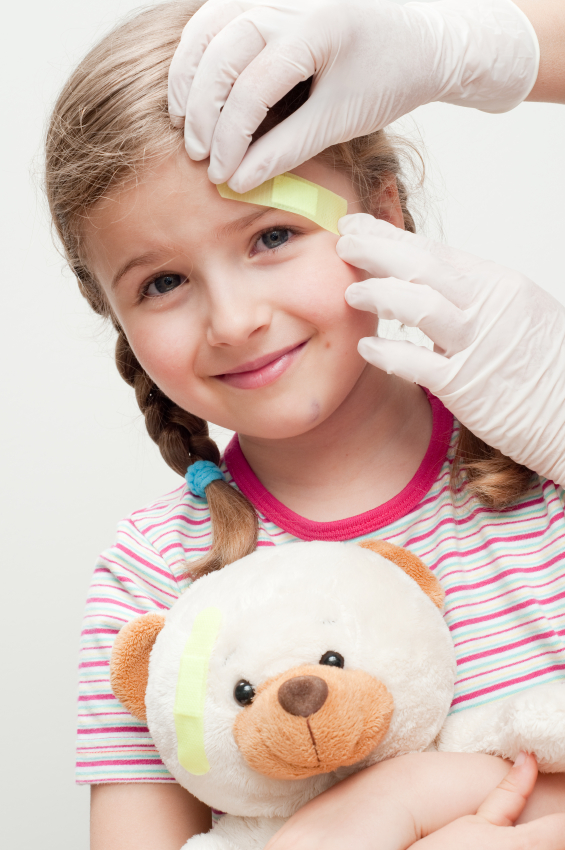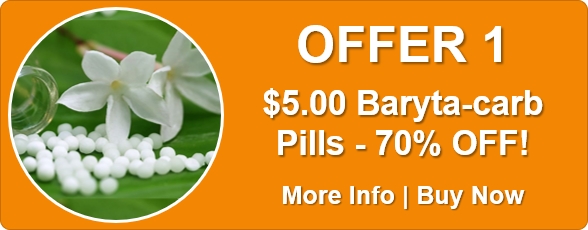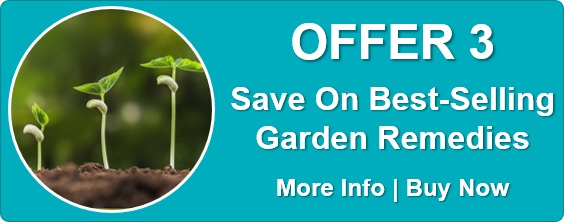Homeopathy Made Simple (Part 1) – First Steps to First Aid
 Homeopathy is easy to use and easy to learn.
Homeopathy is easy to use and easy to learn.
With a little practice and a handful of remedies, even a beginner can make a big difference to everyday health problems.
Homeopathic remedies are relatively inexpensive, long-lasting, and safe for all ages.
They are also easy to obtain.
Many common ones are available from natural health stores, pharmacies and sometimes even supermarkets.
Be Prepared
The first thing to do is to put together a small home-use kit of common remedies – ten or so will do at the start.
Add a couple of homeopathy books that explain how and when to use these remedies.
Then, when the unexpected happens, you will have what you need at your fingertips to start making a difference rather than being caught short and unprepared.
One Step at a Time
When you first start using homeopathy it is best to practice with simple first-aid problems such as minor cuts, burns and bruises until you are familiar with how the remedies work.
There is very little variation in the symptoms arising from first-aid injuries so, unlike acute or chronic problems that need more thought, it is easy to choose the correct remedy.
A blow to the thumb from a hammer, for example, will produce the same set of symptoms no matter who you are, and so respond to one or two symptom-matching remedies.
For this reason it is best to rote-learn a small number of first-aid remedies or have a simple reference list to refer to when the need arises.
We have included a list of the top 20 remedies for first-aid problems in this article, along with a simple remedy finder to help you along the way.
You will only have to look at other remedies beyond this list if the presenting symptoms are unique or unusual for the situation.
As your confidence grows with first-aid remedies, start practicing on acute complaints such as coughs, colds, and headaches where it is much more important to prescribe for the symptoms of the individual rather than the common ones of the complaint.
Colds, for example, are quite different from one season to the next and even between individual sufferers. Because of this, the remedies that treat them will differ and the home-prescriber has to pay more attention to the unique rather than the common symptoms of the sufferer if a prescription is to be successful.
How to do this will be explained in Homeopathy Made Simple: Treating ‘Family and Friends’ Ailments.
Top 20 First-Aid Remedies
With a small investment in some common remedies you will be well-prepared for most first-aid situations – at least as far as homeopathy goes.
The following remedies provide a good foundation for any first-aid kit. A ‘remedy finder’ that guides you on when to use them has been included at the bottom of the list.
- Aconite napellus (Acon.) – The first remedy to think of for panic, fear and shock, especially if the person is agitated, restless, and hyperventilatng. Also useful for anaphylaxis.
- Apis mellifica (Apis) – Great for bites and stings with rapid swelling – the affected area will be puffy, white or rosy, feel hot, and improve with cold compresses.
- Arnica montana (Arn.) – A good remedy for recent or active bruising, soreness of muscles and joints, and after dental work. Also helps nosebleeds from injury or on lifting heavy objects, and the early stages of a black eye. Use in the first 24 hours following a fracture to control bleeding and swelling, and to promote healing.
- Arsenicum album (Ars.) – First remedy to think of for food poisoning, especially from spoiled meat. The vomiting and diarrhoea is accompanied by chills, exhaustion, and restless anxiety.
- Belladonna (Bell.) – Often suits heatstroke or exhaustion. The skin will be hot and red, the face flushed, eyes glassy, and the head will throb.
- Calendula officinalis (Calen.) – Wonderful for superficial wounds, grazes, and even lacerated skin. It promotes healing and reduces the risk of infection.
- Cantharis vesicatoria (Canth.) – An excellent remedy for blistering burns or scalds, including sunburn, 2nd to 3rd degree burns, and wasp stings. The pain will be searing and soothed by cold compresses.
- Cocculus indicus (Cocc.) – A key remedy for motion sickness and faintness, especially if worsened by loss of sleep.
- Euphrasia officinalis (Euphr.) – Comes from the herb eyebright, and relieves irritated and streaming eyes and nose, or persistent pain following the removal of a foreign object.
- Glonoinum (Glon.) – Suits heat stroke with a congestive headache, surging of blood to head and heart, and pulsating pains.
- Hypericum perforatum (Hyper.) The main remedy for injuries to nerves or nerve rich areas such as finger tips and the spine. Useful for wounds or dental work with shooting nerve pain, or painful lacerations and puncture wounds.
- Ledum palustre (Led.) – A good remedy for puncture wounds, bites and stings or twisted and sprained joints, especially ankles. Wounds may be cold and mottled, and the pain will be soothed by a cold compress.
- Nux vomica (Nux-v.) – The main remedy for hangover or indigestion from over-indulgence. Also useful for food poisoning with constant retching or urging at the toilet.
- Phosphorus (Phos) – Treats many after-effects of electroshock. Also a remedy for nosebleeds when blowing the nose.
- Rhus toxicodendron (Rhus-t.) – A good remedy for contact allergic reactions with red, swollen and itchy blisters such as may be caused by poison ivy. Also useful for sprains and strains that improve with motion.
- Ruta graveolens (Ruta.) – A wonderful remedy for sprains, strains and ganglions, especially of the wrists and ankles. Suitable for injuries to tendons or bone periosteum that may also arise from dental work.
- Silicea terra (Sil.) – The ‘homeopathic scalpel’. Used to help the body expel embedded foreign substances such as splinters and glass shards.
- Symphytum officinale (Symph.) – The main remedy for fracture repair once the bone has been set. Not to be used before setting (use Arnica instead at this time) as it stimulates rapid bone production that will be disturbed by the setting. Also useful for punctured or ruptured eyeballs.
- Tabacum (Tabac.) – A good motion sickness remedy when nausea, dizziness, chills, and sweating are present. Symptoms are worsened by tobacco smoke.
- Urtica urens (Urt-u) – Useful for scalds or burns with continuous stinging or burning pain.
Quick Remedy Finder
Scan the following list for the problem you want to treat, note the remedy (or remedies) indicated and then check the remedy list to see which one suits best.
An instruction sheet on how often to give each remedy is available in a link at the bottom of this article.
Anaphylaxis: Acon; Apis.
Bites and stings: Apis; Arn; Canth; Led.
Blisters: Canth; Rhus-t.
Bruises: Arn; Led.
Burns and scalds: Canth; Urt-u.
Cuts, scrapes and puncture wounds: Arn; Calend; Hyper; Led.
Dental Work: Arn; Hyper; Ruta.
Electroshock: Phos.
Eye injuries: Arn; Led; Euphr; Symph.
Food poisoning: Ars; Nux-v.
Fractures: Arn; Symph.
Heat stroke or exhaustion: Bell; Glon.
Hyperventilation: Acon.
Motion sickness: Cocc; Tabac.
Nosebleeds: Arn; Phos.
Overindulgence and hangover: Nux-v
Panic and Shock: Acon.
Poison Ivy: Rhus-t.
Splinters, thorns, glass shards: Sil.
Sprains and strains: Arn; Hyper; Led; Rhus-t; Ruta.
How Often to Take a Remedy
The frequency with which a remedy is given depends on the intensity of the complaint – the more intense the symptoms, the more frequent the dose.
The golden rule of homeopathy is that once symptoms start to improve, stop taking the remedy. Only re-dose if improvement slows or symptoms start to return.
This approach avoids too-frequent dosing with the remedy that may cause an aggravation– a temporary intensification of symptoms. An aggravation usually means that the remedy has been taken too often.
The following link provides a guide on how often to dose for the intensity of your first-aid or acute problem. Its instructions are suitable for any remedy preparation – pills, liquids, creams, and even olfaction doses: How Often Should I Take a Dose of My Remedy.
Where to Next?
For a small investment and a little planning, homeopathy will prepare you for most minor emergencies. All that remains is for you to practice- the more you practice, the faster you learn, and the better you become at homeopathic prescribing.
While it is always important to seek medical advice for serious injuries and situations, don’t forget that even during and emergency, homeopathy can help. A few doses of the needed remedy while waiting for the ambulance can make all the difference when every minute counts … and the remedies are so easy to give.
In our next article, Homeopathy Made Simple: Treating ‘Family and Friends’ Ailments, we will simplify homeopathy further with more information on how to treat the simple acute complaints of family and friends and why it is good to be different.
Until then, what are you waiting for? Collect a few of the key remedies and start practising.





